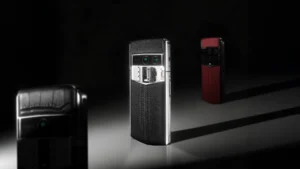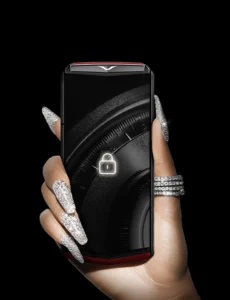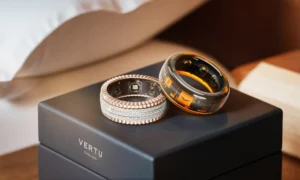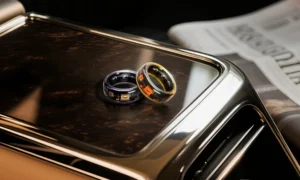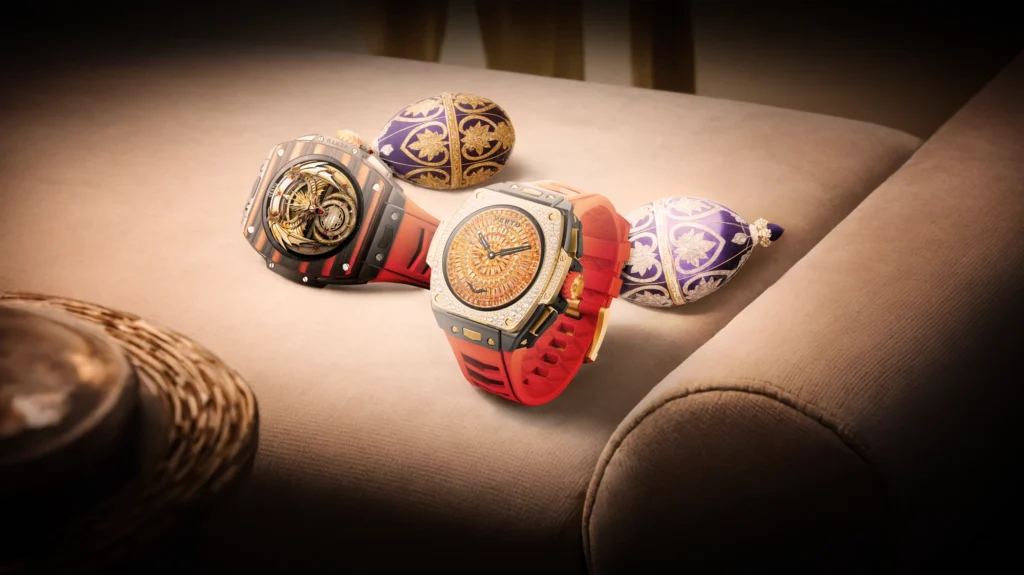
You may notice your wearable sometimes gives health data that seems off. This can feel confusing or even frustrating. Hidden factors often change the data you see each day. You might think your device always tracks your health perfectly, but the data can shift for many reasons. Even the best Accuracy Wearables for health tracking can show data that does not match how you feel. If you want to trust your data, you need to know what can change it. Take time to look at your data closely and ask questions when something seems wrong.
Key Takeaways
-
Make sure your wearable fits you well. A tight fit helps sensors work right. Check where it sits on your wrist or body. This helps stop mistakes in the data.
-
Know that skin tone and tattoos can change how sensors work. If your data looks wrong, move your device to another spot.
-
Think about things like temperature and light. Very hot or bright places can make readings wrong. Keep your device away from strong sunlight.
-
Remember, not all wearables are just as accurate. Look up what your device measures best. This helps you know which data you can trust.
-
Take care of your device often. Clean it and update it as the maker says. This helps your device work well.
Skin Contact & Placement
Fit and Position
You may think your wearable always gives correct data. But how you wear it is very important. If your device is too loose, the sensor may not touch your skin well. If it is too tight, it can also cause problems. This means the device might not show what is really happening in your body. For example, a watch that moves up and down your wrist during exercise can lose skin contact. When this happens, the device may miss signals or show wrong numbers.
If your wearable does not touch your skin right, it can be very inaccurate. Things like movement, blood flow, and sensor moving on your skin can cause errors in heart rate readings. Wrist devices often have problems because they move, your skin changes shape, and blood flow changes.
Always check your device before you start tracking your health. Make sure the sensor is flat against your skin. If you wear it on your wrist, keep it above your wrist bone. It should be snug but not too tight. This helps your device get better data.
Sensor Disruption
Where you wear your device also changes your data. Some spots on your body give better readings than others. Here is a simple chart about common places:
|
Placement |
Advantages |
Disadvantages |
|---|---|---|
|
Wrist |
Easy to use; Good for daily wear |
Can have errors from movement; Skin color, tattoos, and fit can change accuracy |
|
Chest |
Very good for heart rate; Great for sports and medical use |
Not very comfy; Not good for all-day wear |
|
Finger |
Very accurate; Feels nice and easy to wear |
Not much info for long-term use; Not many brands make them |
The kind of sensor in your device matters too. Wrist devices use optical sensors. These can lose accuracy if you move a lot. Chest devices use electrical sensors. These usually work better when you exercise. Finger devices use special sensors and can notice small changes in your body. But not many companies make them yet. If you want the best data, think about where and how you wear your device.
User Physiology
Skin Tone & Tattoos
Your skin can change how well your wearable works. Most devices use light sensors to check your body signals. These sensors can have trouble with different skin colors. Some research says darker skin can make it harder to measure heart rate. This is because more melanin in the skin can block some of the light. But not all studies agree, so it does not happen to everyone.
Here is a table that shows what scientists found:
|
Study Findings |
Description |
|---|---|
|
Conflicting Results |
A review found mixed results about how skin color affects optical heart rate accuracy. |
|
Darker Skin Challenges |
Some studies say more melanin in darker skin can make heart rate readings less accurate because less light gets through. |
|
Need for Inclusive Research |
The review says we need more research with people of all skin colors to get better data. |
Tattoos can also stop the sensor’s light. If you wear your device on a tattoo, you might see weird numbers or missing data. Try moving your device to skin without a tattoo for better results.
Different skin colors can make photoplethysmography (PPG) work less well. Things like skin color, arm hair, sweat, temperature, and body size can change PPG accuracy. The study says we need bigger tests with more people who have darker skin. This will help us learn more about PPG and help everyone get good health data.
Sweat & Hair
Sweat and hair can also make your wearable less accurate. When you sweat, the sensor may not stay in place or read your signals well. Sweat can make your device slip or lose contact with your skin. This can cause missing or wrong data, especially when you exercise.
Hair on your wrist or arm can block the sensor’s light. If you have thick hair, your device may not get a clear signal. You might see strange data or numbers that do not match how you feel. Try putting your device where there is less hair or clean the area first.
Remember, your body is special. Your skin, hair, and sweat all change how your device works. Always look at your data for anything odd. If you see strange numbers, think about these hidden reasons before you worry.
Environmental & Technical Interference
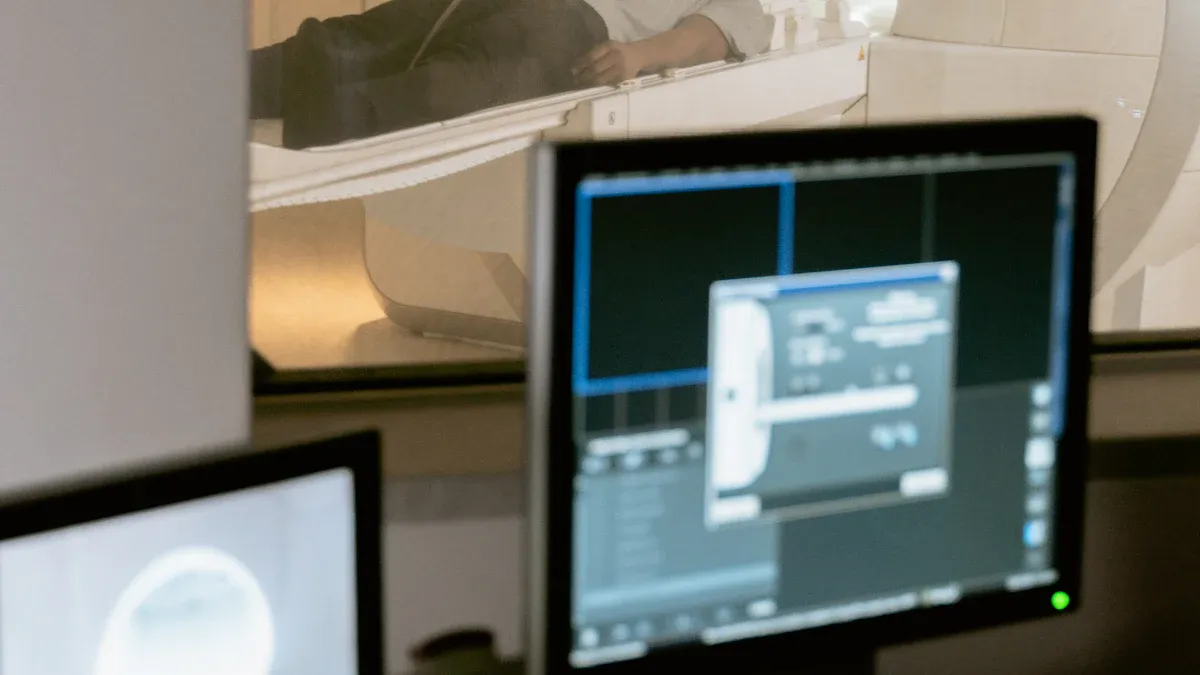
Wireless & Signal Issues
You count on your wearable to gather and send data. Sometimes, the device cannot connect to the internet or satellites. When this happens, your data might not upload right away. You may see missing or late data in your health app. If you walk where the signal is weak, your device can lose track of steps or heart rate. This can make your numbers look odd or incomplete. Always check your device’s connection if you see gaps in your data.
Temperature & Light
Things like temperature and light can change how your wearable works. Hot or cold weather and bright sunlight can affect the sensors. Your device may show wrong numbers if you wear it in extreme weather. The table below shows what scientists found about temperature and light:
|
Evidence Description |
Findings |
|---|---|
|
The association between increasing temperature and heat strain was nonlinear. |
This means temperature changes can affect sensor readings and health checks. |
|
A weak significant relationship was observed between personal ambient temperatures. |
This shows that light and temperature can cause sensor errors. |
|
Inaccurate readings in hot working conditions. |
This can give wrong information about heat and safety. |
If you use your wearable outside, try to keep it out of direct sun. Extreme heat or cold can make your data less correct. Always check your numbers after being in hot or cold places.
Movement Artifacts
Moving a lot can cause mistakes in your data. When you run, jump, or wave your arms, your device may count extra steps or wrong heart rates. Here are some ways movement changes your data:
-
Movement can cause errors in step count and activity data.
-
Devices like Fitbits make more step mistakes when you move a lot.
-
Step counts can change with different types of movement.
-
Heart rate sensors work best when you are still.
-
Moving a lot can make heart rate numbers less correct.
-
Repeating the same moves can confuse the device.
-
The type of activity can change heart rate errors.
-
Scientists say using ‘Activity Type' can help find mistakes in heart rate data.
Always look at your data after hard exercise. If the numbers do not match how you felt, movement may be the reason. Different devices handle movement in their own way. This can make it hard to compare data if you use more than one wearable.
Your environment and technical problems can change your data in many ways. Always think about these things when you look at your health numbers. This helps you make better choices and trust your data more.
Data Quality & Interoperability
Wearable Device Accuracy
You want your wearable to give you the right numbers. But the accuracy can change based on what you check. Some devices are good at heart rate, but not at sleep or activity. You should know how much you can trust each type of data. Look at this table to see how different health checks compare:
|
Measurement Type |
Accuracy Metrics |
|---|---|
|
Heart Rate |
Mean bias of ±3% |
|
Arrhythmia Detection |
Pooled sensitivity: 100%, Pooled specificity: 95%, Pooled accuracy: 97% |
|
Aerobic Capacity (VO2max) |
Overestimated by ±15.24% (resting tests), ±9.83% (exercise tests) |
|
Physical Activity Intensity |
Mean absolute error: 29% to 80% |
|
Step Counts |
Mean absolute percentage errors: -9% to 12% |
|
Energy Expenditure |
Mean bias: -3 kcal/min (or -3%), error range: -21.27 to 14.76% |
|
Blood Oxygen Saturation |
Mean absolute difference: up to 2.0% |
|
Sleep Measurement |
Tendency to overestimate total sleep time (mean absolute percentage error typically > 10%) |
Some numbers are close to what is real, but others are not. For example, sleep tracking often says you slept more than you did. Physical activity intensity can be very wrong, with big errors. You should check what kind of data you are using before making health choices. Not every measurement is just as accurate.
Missing or Inaccurate Data
Sometimes, you see gaps or weird numbers in your health app. This happens when your device misses data or gets it wrong. Many people worry about missing data from device mistakes or forgetting to wear it. If you leave your device at home, your steps do not count. Sleep data can be wrong if you read or watch TV in bed, because the device may think you are sleeping.
-
You might have missing data if your device loses connection or runs out of battery.
-
You can get wrong data if you move a lot or wear your device too loose.
-
Sleep tracking can think you are asleep if you lie still, even if you are awake.
False positives and false negatives can also mess up your health tracking. Your device might say you have a problem when you do not, or miss a real issue. For example, some devices show heart rhythm problems that are not real. In one study, only 11.4% of people with abnormal pulse readings had a real heart problem. This means you could worry for no reason or miss a real health risk.
Bad data can make you make wrong health choices. You might get alerts for problems that are not real, or miss warnings for real ones. Always check your data and talk to your doctor if something looks strange.
Integration Challenges
You may want to use more than one device or share your data with your doctor. This is not always easy to do. Many devices use different formats, so it is hard to put all your health info together. Doctors often cannot see your wearable data in their records. Sometimes, they must type it in by hand, which takes time and can cause mistakes.
|
Challenge |
Description |
|---|---|
|
Different wearables produce data in various formats, complicating integration with EHRs. |
|
|
Data Overload and Workflow |
Excessive data from wearables can overwhelm healthcare staff, hindering effective data usage. |
|
System Compatibility |
Older IT systems may not integrate well with new devices, causing delays in data access. |
|
Training and Change Management |
Staff require training to effectively utilize wearable data, which can be resource-intensive. |
|
Cost Constraints |
Financial limitations can hinder the adoption of new technologies in smaller clinics. |
“Low interoperability between wearable devices and health platforms creates barriers to data integration, leading to fragmented patient information and reduced data utility for healthcare providers. This lack of integration results in subsets of data that cannot be easily incorporated into patient historical data, diminishing their value.”
Only a few doctors use wearable data in their records. Most do not have access or must enter it by hand. This makes health tracking less reliable. You may think your doctor sees all your data, but often they do not.
When you use more than one device, you may get different results for the same health check. This can confuse you and your doctor. You need to know that data quality depends on how well your devices work together.
Impact on Health Tracking
Accuracy Wearables for Health Tracking
You use your wearable to help you make good choices. When you check your patient-generated health data, you want it to be correct. But accuracy wearables for health tracking can sometimes show numbers that do not match what is really happening in your body. This can make you confused or cause you to make mistakes in your daily life.
Let’s see how different devices stack up. The table below shows how some popular wearables measure heart rate, sleep, and activity. You can see that even the best accuracy wearables for health tracking can make mistakes.
|
Device |
Measurement Type |
Accuracy/Error Rate |
|---|---|---|
|
Apple Watch |
Heart Rate |
Underestimates by 1.3 bpm |
|
|
Caloric Expenditure |
Miscalculates by up to 115% |
|
|
Step Count |
0.9-3.4% error |
|
|
Sleep Detection |
97% accuracy for identifying sleep |
|
|
Wake Detection |
26% accuracy for identifying wakefulness |
|
|
Heart Rate Variability |
Underestimates by 9.6 ms |
|
Oura Ring |
Resting Heart Rate |
99.3% accuracy |
|
|
RMSSD |
91.5% accuracy |
|
|
Caloric Expenditure |
13% error |
|
|
Sleep Detection |
94% accuracy for identifying sleep |
|
|
Total Sleep Time |
96% accuracy |
|
|
Sleep Stage Identification |
79% accuracy for light, deep, wake, REM sleep |
|
General |
Heart Rate |
Up to 20% error |
|
|
Caloric Expenditure |
Off by up to 100% |
|
|
Sleep Time |
Overestimates total sleep time |
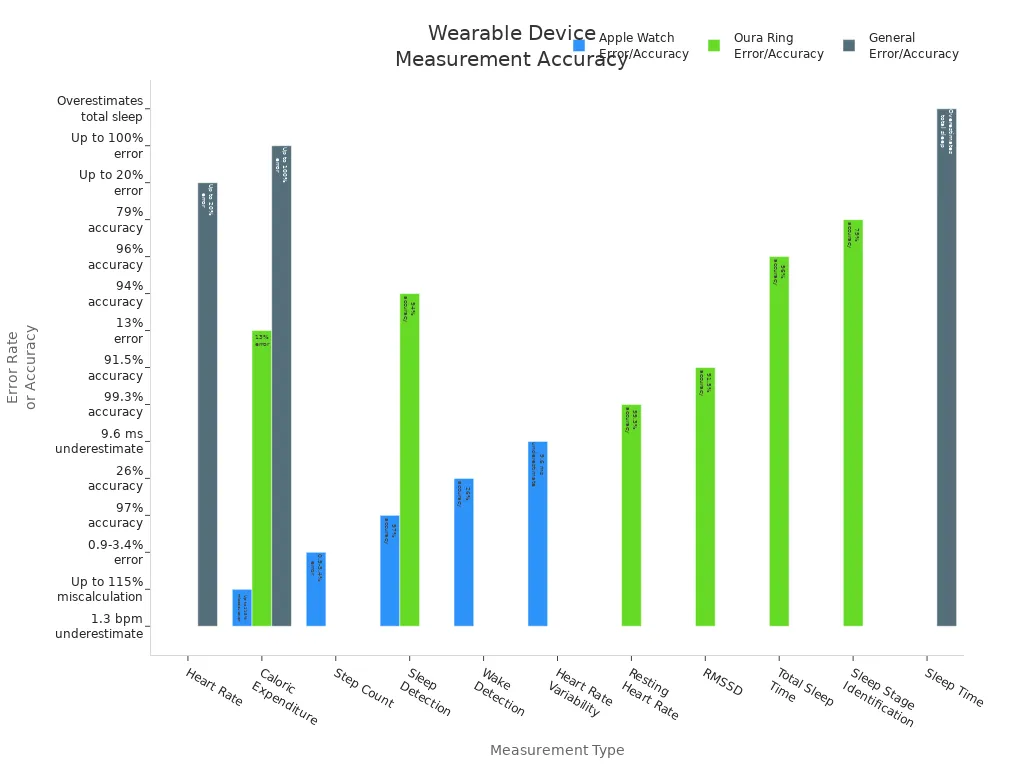
You might see that sleep detection is very good, but wake detection is much lower. Some devices say you sleep more than you do. Others count your steps or calories wrong. When you use patient-generated health data from these devices, remember that not every number is right.
Tip: Look at your data over time instead of worrying about one weird number. This helps you see real changes in your health.
Sometimes, accuracy wearables for health tracking can give you false alarms. For example, a device might say your heart rate is too high when you just move your arm. Or it might miss a real problem if the sensor does not touch your skin. These mistakes can make you go to the doctor when you do not need to, or miss a warning sign.
Here are some things that can happen:
-
You may get a warning about an irregular heartbeat that is not real.
-
Your device could miss a real heart problem if the data is wrong.
-
You might think you slept well when you did not, or the other way around.
-
You could change your exercise or eating habits because of wrong numbers.
When you use patient-generated health data, always remember that accuracy wearables for health tracking are not perfect. Use your data to help you, but do not trust it for everything.
Health Risks
If you trust accuracy wearables for health tracking too much, it can sometimes hurt your health. If you believe every number, you might make choices that are not good for you. Here are some health risks you should know:
-
Wrong data from wearables can make you exercise too much or eat in unhealthy ways.
-
Some people get worried after seeing strange numbers, even if doctors say they are healthy.
-
People with heart problems may not understand wrong data, which can be dangerous.
You might also have problems with medical care you do not need or miss care you do need:
-
Wrong data from wearable devices can cause harm, like getting medical care you do not need.
-
False alarms from bad sensor readings can make you worry and go to the doctor when you do not need to.
Note: If your wearable makes you worry about your health, talk to a doctor before making big changes.
Accuracy wearables for health tracking can help you learn about your body. But you should use your patient-generated health data carefully. Always look for patterns, ask questions, and remember that no device is perfect. This way, you can use your data to help your health without taking risks you do not need.
Improving Wearable Devices Accuracy
Proper Placement
You can make your wearable more accurate by wearing it in the right place. If you put your device on your waist or thigh, it can track your movement better. These spots help the device know if you are just moving or if something serious is happening. Always read the instructions to see where to wear your device. This helps your data be more correct and fixes problems with calibration and validation.
Tip: Make sure your device fits tight enough and does not slide around when you move. If your device is loose or moves, your data can be wrong.
Device Maintenance
Taking care of your wearable helps it work well. You should check your device often and do what the maker says. Here is a table with some easy ways to keep your device working:
|
Maintenance Type |
Recommended Practices |
|---|---|
|
Preventive Maintenance |
Check calibration, check battery, update software |
|
Corrective Maintenance |
Fix problems fast, use the right parts, test after repairs |
|
Cleaning and Sterilization |
Clean as told, use the right cleaner, keep it dry |
|
Regulatory Compliance |
Follow safety rules, write down checks, do regular checks |
|
Training |
Learn how to check your device, know what to do in emergencies, keep learning about new tech |
Doing these things helps your device last longer and keeps your data right. If you see a problem, fix it soon so it does not get worse.
Understanding Limitations
Remember, no wearable is perfect. Devices can have trouble with accuracy, data, or working for everyone. Some work better for grown-ups than for kids. Wearable algorithm variability can change your results. Sometimes, studies do not include all people, so the data may not fit you. You might see problems with data validation or how easy it is to use. Battery life and size can also make your device less useful.
Note: Use your wearable to help you, but do not use it as your only health guide. If you see something strange in your data, talk to a doctor.
If you know these limits, you can use your wearable smarter and get better health tracking.
You deal with three hidden things that can change your wearable’s health numbers. These are surface-only monitoring, environmental sensitivity, and form-factor constraints.
|
Hidden Factor |
Description |
|---|---|
|
Surface-Only Monitoring |
Sensors only check signals on your skin |
|
Environmental Sensitivity |
Skin color and temperature can change the readings |
|
Form-Factor Constraints |
Small sensors might not give the best data |
Keep these problems in mind to make smarter health choices. Try these ideas: Wear your device the right way. Look at your numbers often. Use your wearable to help you, but do not use it instead of a doctor.
New tech will keep making wearables better. You can get the best results by learning more and using your device carefully. 😊
FAQ
What makes wearable devices less accurate for digital health tracking?
Wearable devices can show wrong data if they do not touch your skin well. Where you put your device matters a lot. Your body’s features can also change the readings. Things like weather and tech problems can mess up your numbers. Always make sure your device fits right and check the settings.
How does interoperability affect access to wearable data in digital health?
Interoperability means devices and health apps can share data. If systems do not work together, you might lose some of your data. Good interoperability helps doctors see your info for remote patient monitoring. This leads to better care for you.
Can digital health technologies improve the accuracy of wearable devices?
Digital health technologies help wearables collect and study your data. Advanced sensors and smart software give better results. These tools also help with remote patient monitoring. They make it easier to share wearable data.
Why is access to wearable data important for remote patient monitoring?
Doctors need your wearable data to watch your health from far away. They use this info to make choices about your care. If you cannot share your data, your care may not work as well. Interoperability helps you and your doctor team up.
What challenges do wearable devices face with interoperability in digital health?
Wearable devices use many formats and systems. This makes sharing data hard sometimes. You might have trouble sending info to your doctor or health app. Better interoperability of wearable data gives you more support and easier access.


